Despite face masks, local artisans put their heart and soul into the annual creative festival amid the rush of the winter breeze. Amid Covid-19, the 7th Chiang Mai Design Week brought the northern city back to life. Shedding its superfluous layers, the subdued event finally came to fruition by exploring its roots.
"It was a departure from previous years because it was difficult to hold a physical event due to Covid-19. We couldn't build big structures," said Pichit Virankabutra, deputy executive director of the Creative Economy Agency (CEA), which organised Chiang Mai Design Week under strict disease control measures. The art event wrapped on Sunday.
"Chiang Mai is facing a tough time because tourism has come to a halt. We must come up with other solutions to revive the economy. Therefore, this year's festival tapped into handicraft, cuisine, art, and performance, which are in line with the Charming Chiang Mai programme."
Held under the theme of "Co-Forward", this year's nine-day event saw 200 creative businesses from Chiang Mai and other provinces take part. It featured more than 185 activities, covering three iconic venues like the Three Kings Monument, San Kamphaeng, and Chang Moi.
"In the face of the [coronavirus] crisis, everybody was betting on this festival. It is a small tool that creates possibilities," said Pichit. "For me, it is an experiment where everybody can learn by trial and error. Although the event lasted for nine days only, it can leave footprints in the community."

Natthapol Wannaporn, the owner of Charm Learn Studio, shows how to coat ceramic cups with colour.
Learning from grandparents
Visitors were able to navigate their way through the festival starting at the TCDC's regional headquarters on Muang Samut Road. Inside the building were art installations that emerged out of a homecoming project where young artisans drew inspiration from local wisdom but gave a modern twist to expand the market.
On view were a wide range of artefacts from sky lanterns to folk music. Made of woven thin bamboo strips, ta leaw (eagle's eyes) hung from the ceilings. It had central patterns that looked like an eagle's eyes targeting its prey but came in different details and sizes. The traditional amulet can also be used for decoration.
"Born in Chiang Mai, I have lived and will die here," said Taantaepin Liangchairat in northern dialect, who learned the craft of Lanna culture from her ancestors and passed it on to young participants in the workshop. "When I was your age, I never took an interest in it, but at some point, I realised I would like to preserve it.
"It is common in Southeast Asia. Its influence possibly grew in Lanna culture during the Hariphunchai period when Brahmins arrived."
The process of reinterpretation can give disappearing works of art and mundane objects a new lease of life because they can perform new functions. Just a stone's throw away, a wide variety of familiar local crafts were on display ranging from traditional wicker baskets with fabric lids to bamboo benches equipped with foldable legs.
"In the past, people created them by instinct. We wanted to preserve their essence, but also improve them for practical use because product development nowadays focuses on aesthetic design," said Ratthee Phaisanchotsiri, who curated these items from local artisans.
In fact, they nearly fell off the radar. While silver bowls were redesigned with handles, bamboo umbrellas were adjusted for daily use. Artisans had an eye for small details because it increased product function without interfering with the original appearance.
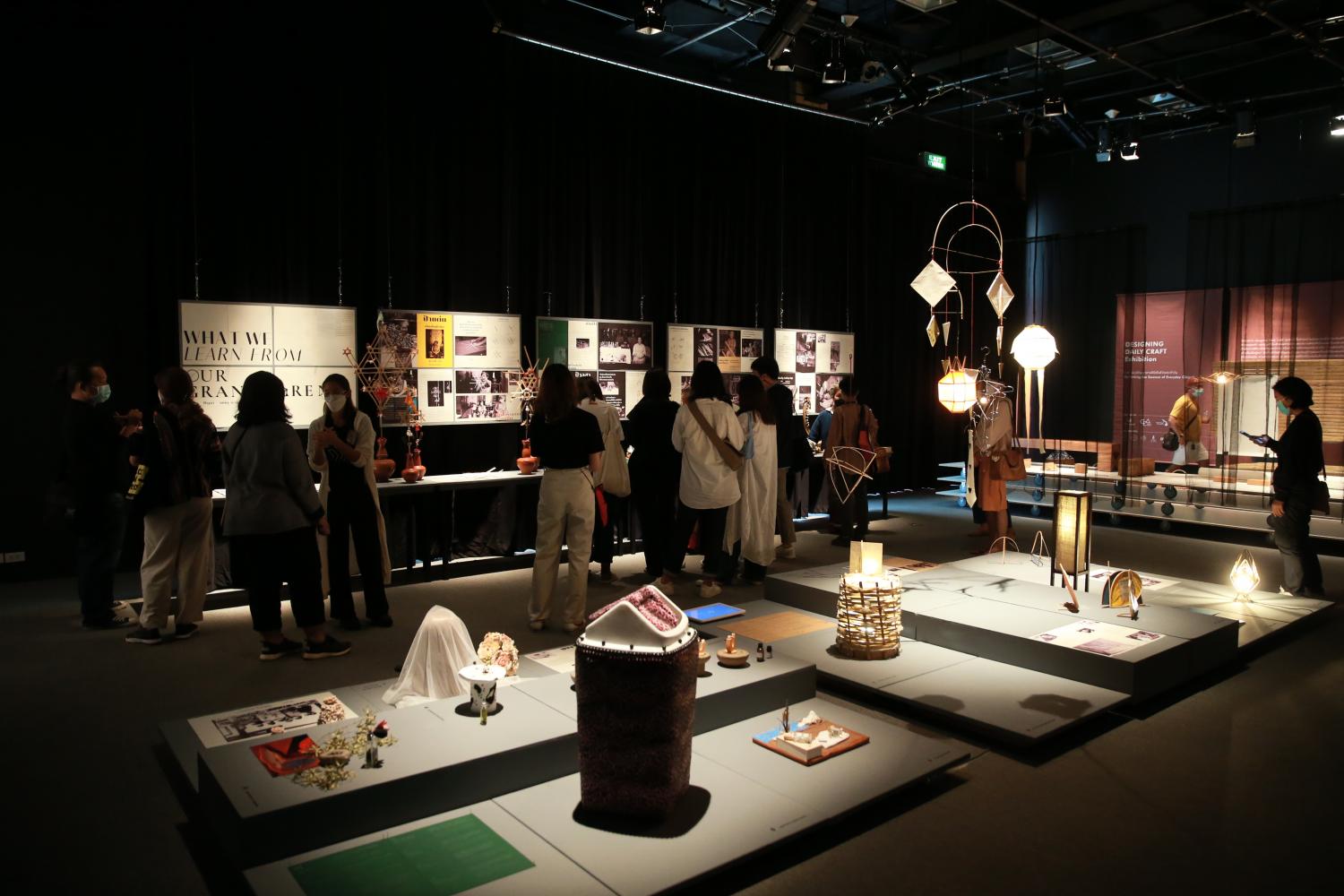
Artefacts and everyday objects that embrace the old and the new. (Photo: Chiang Mai Design Week)
Returning home
However, creative minds are facing challenges in adapting to fast-paced digital technology because they work mainly offline. Located on the upper floor of the Chiang Mai City Arts and Cultural Centre, the interactive showcase gathered sensory data to ensure that artisans would understand consumers across platforms.
"While visitors could re-experience forgotten senses, we were able to collect and publish data for those interested in developing new products," said Sirirat Laotub, who designed the sensory exhibition. "Instead of sending paper questionnaires, I created an interactive work as a playground."
At each station, visitors were encouraged to explore their faculties. For example, they were asked to eat candy and discard plastic packages in one of two boxes, which represented sweet and salty flavours. Depending on the choice they made, they would lose the ability to experience that flavour for good.
When guests arrived at the last station, they were asked to open one of the many doors that ranged from going home to falling in love. Meanwhile, they were also able to touch heartbeats on devices and express feelings on sticky colour paper.
"We wanted visitors to understand what they felt when making decisions. For example, those who chose the door of going home felt relaxed," said Asst Prof Aussama Soontrunnarudrungsri, lecturer in product development at Kasetsart University. "Your decision indicates what matters to you."
Recently, the city has had a rise in locals who studied or worked elsewhere before but have returned home. One of them lives in San Kamphaeng, the hub of handicrafts, on the eastern side of the city. It is home to an umbrella making centre, the contemporary art museum, and ceramic studios.
"A decade ago, I had a full-time job that did not involve ceramics. My friends and I had opened a studio in Bangkok. It was not until 2016 that I planned to return home to look after my parents," said Natthapol Wannaporn, who opened the Charm Learn Studio on his family's longan orchard late last year.
"I studied ceramics [at university] and grew up in this area where craft jobs existed. I spent four years building this studio. It produces ceramics and offers workshops," he said.
In fact, descendants are playing a crucial role in putting their homes on the map like the nearby Loang Him Kao community. Like-minded craft lovers bought the land and set up the village where each family can sell handmade products. However, it is the younger generation who are promoting the community and its markets.
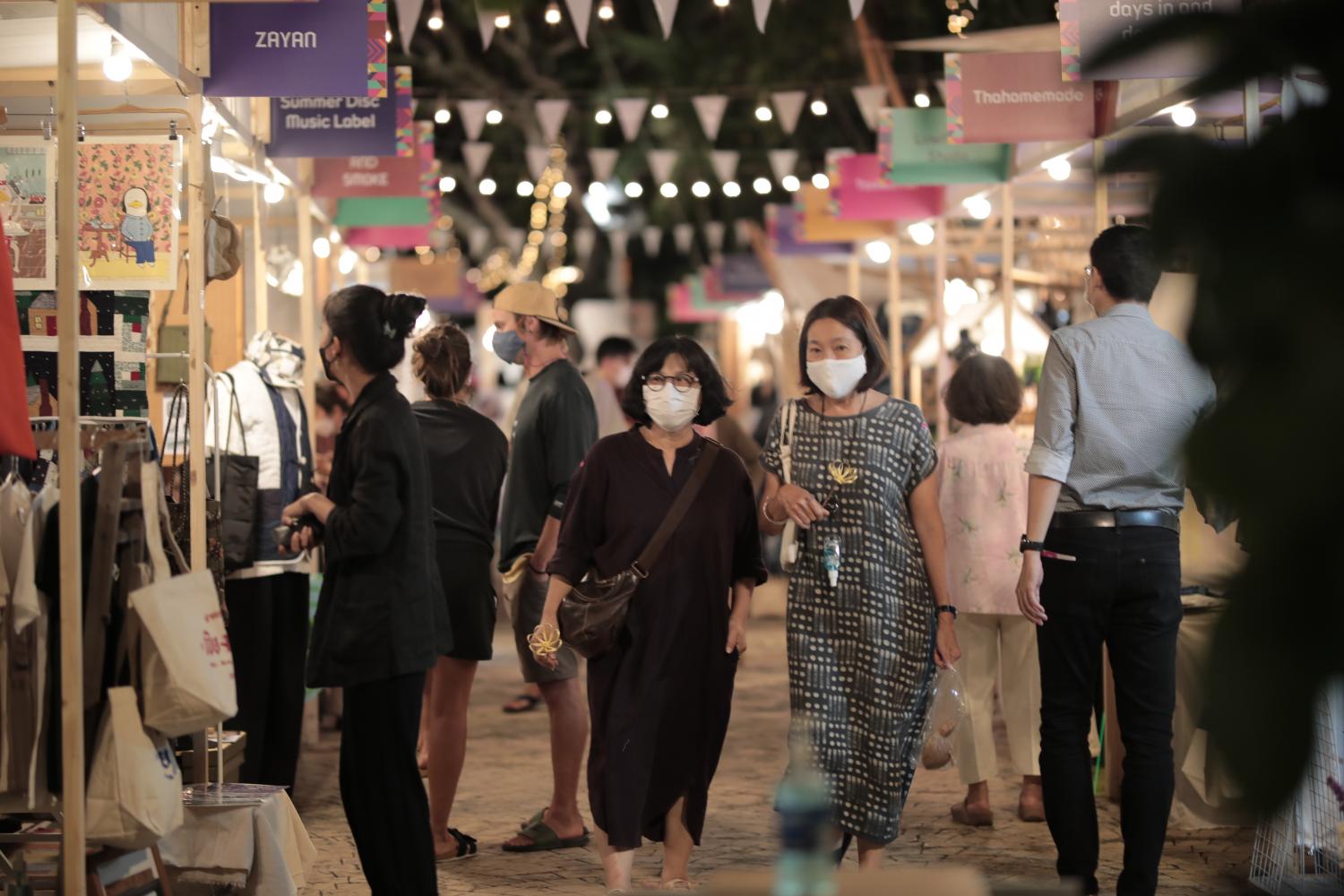
Visitors stroll around the pop market at night. (Photo: Chiang Mai Design Week)
Reviving neighbourhoods
The arrival of new faces brings colour to age-old communities. Once a bustling business district in Chiang Mai, Chang Moi became deserted when houses were sold or abandoned. However, the community is growing again into a creative hub. In recent years, new craft businesses have burgeoned in old shophouses, attracting local folks and tourists.
"After the coronavirus halted my business, I offered [woodcut] workshops to tourists," said Saowakhon Sriboonruang, the owner of Chiang Mai Heart, while showing how to create a woodcut using animal-shaped woodblocks from the Kew Lae Noi village.
"Woodblocks are unique. Although they have the same pattern, they are cut differently. I want visitors to bring this handmade souvenir home because it is the only piece in the world."
With the advent of the festival, old faces joined hands to revive this creative district. When visitors walked down the alley, they discovered an old community around Wat Chomphu. It is said that this out-of-town neighbourhood deteriorated into a slum, but gradually came back to life. In fact, it is home to hidden gems. For example, Sookkho is the only remaining smithy in the area.
Reaching every nook and cranny, art installations were part of the Chang Moi Art Village experiment project. Located on the upper floor of Kodang Rachawong, mixed-media art encapsulated urban change. While "Neo-Aspect" by Yanotai Palosin and Napapat Soponvichankun captured the beauty of the old and the new in transparency film, "Karma Cheap" by Chatchai Sukanan recorded labourers in action on video.
Placed on the street, a photo exhibition documented stories of neighbours, who come from various backgrounds, to define its local identity. First-hand accounts were hung on the wall, sharing memories of the place with passers-by. Even the river saw art installations that underlined public issues.
"With the aim of co-forwarding, the festival should continue to provide a platform, improve the standard of living, and propel the local economy," said Imhathai Kunjina, a senior business and innovation development strategist for CEA.
"Some people said the festival downsized in terms of visibility because there were no photogenic spots. However, it is the first time that we have grown up. At seven, we are approaching middle age."

Pottery on display at the Chiang Mai City Arts and Cultural Centre. (Photo: Chiang Mai Design Week)

Performers dance at the opening ceremony. (Photo: Chiang Mai Design Week)
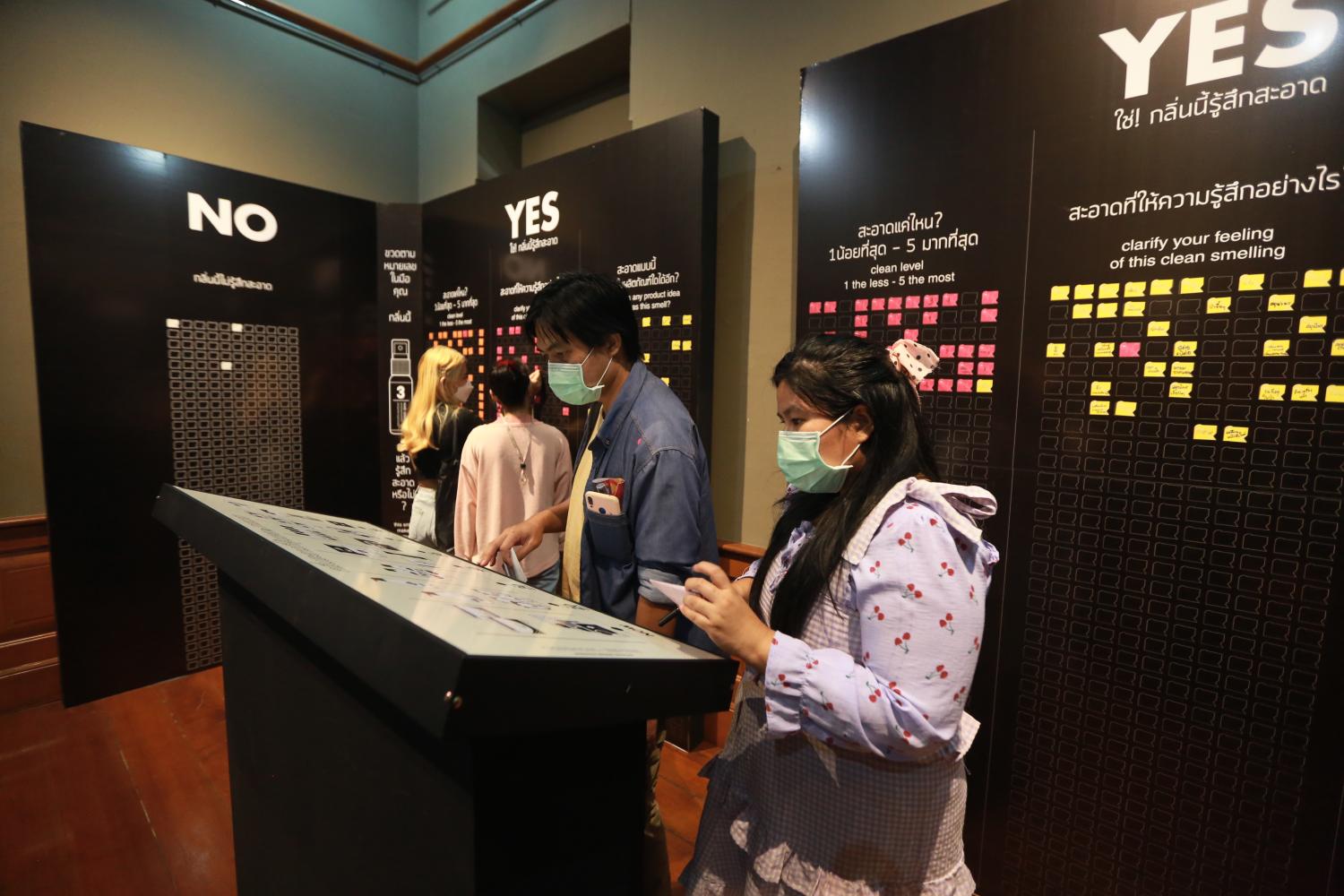
Visitors explore their faculties at the interactive sensory showcase. (Photo: Chiang Mai Design Week)

A photographer uses the wet plate collodion process. (Photo: Chiang Mai Design Week)
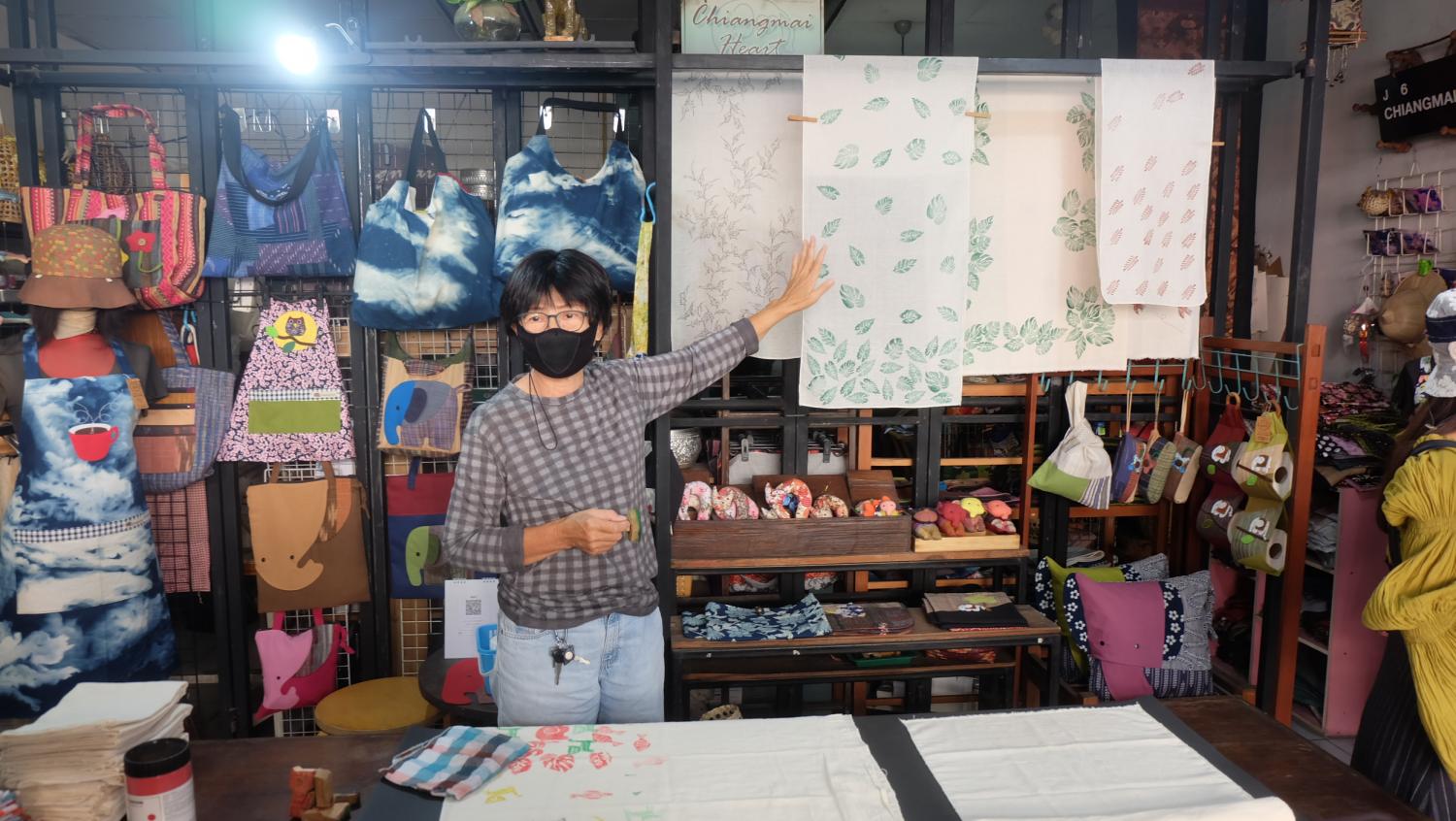
Saowakhon Sriboonruang, the owner of Chiang Mai Heart, demonstrates how to create a woodcut using animal-shaped woodblocks.
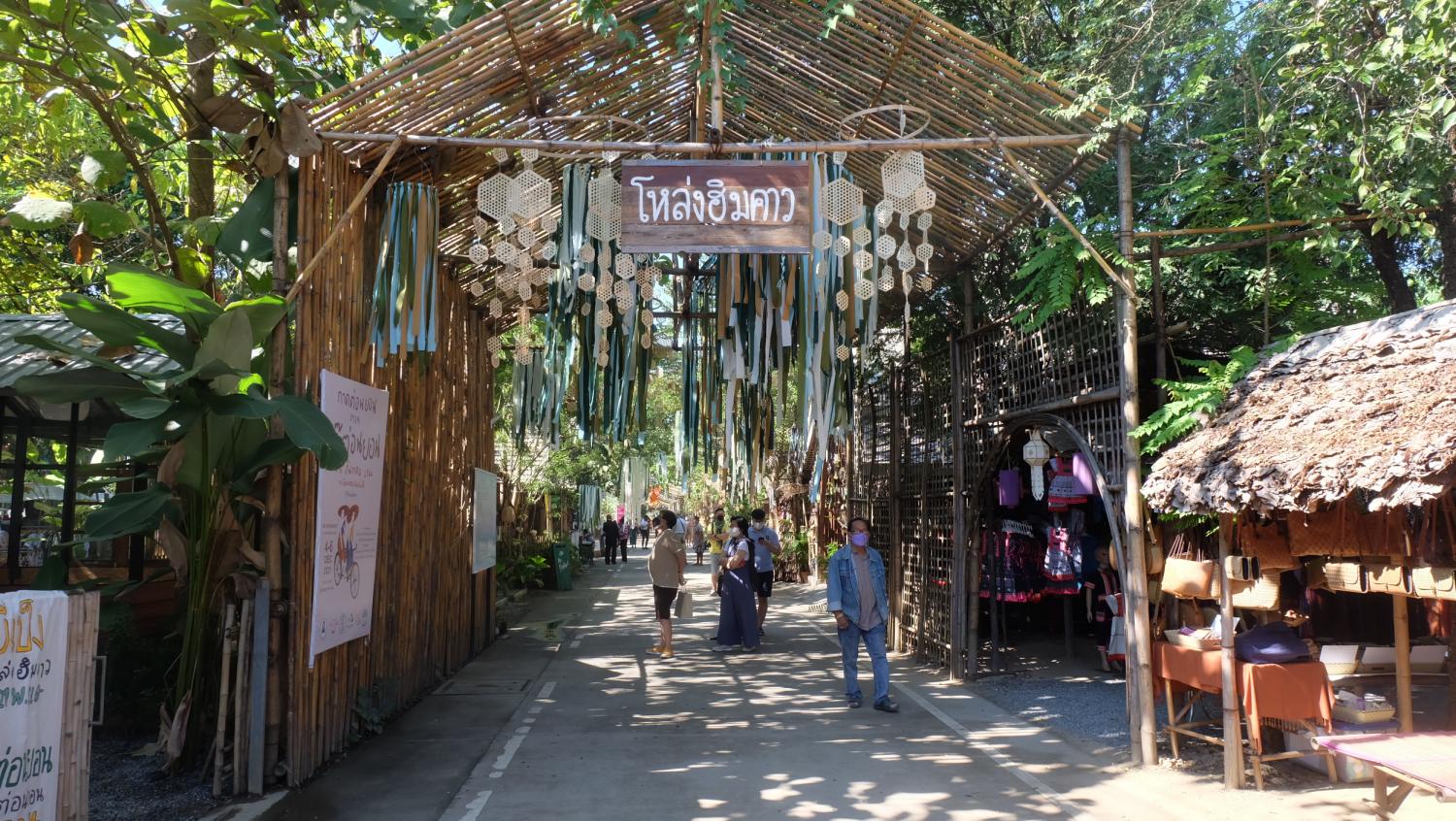
People flock to the Loang Him Kao community.

